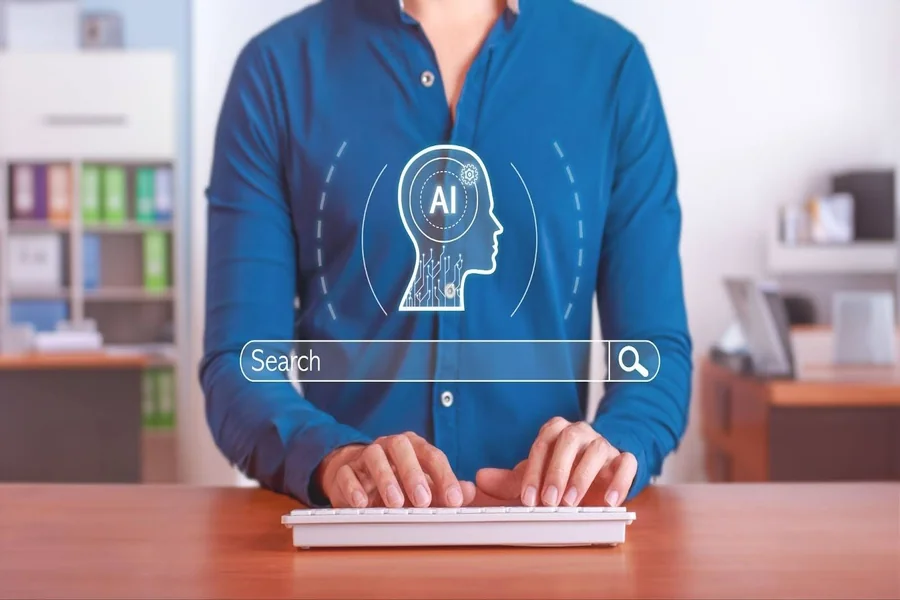AI Assistant: Revolutionizing Productivity and Workflow in the Modern Era
In today’s fast-paced digital world, businesses and individuals alike are seeking smarter, faster, and more efficient ways to handle their daily tasks. One of the most significant breakthroughs in recent years is the rise of artificial intelligence (AI) assistants. These tools are transforming the way we work, communicate, and organize our lives. For those looking to explore cutting-edge solutions, the AI Assistant offers an innovative approach to automating tasks and boosting productivity.
What is an AI Assistant?
An AI assistant is a software application powered by artificial intelligence designed to perform tasks typically handled by humans. These tasks can range from scheduling meetings and managing emails to providing data-driven insights and even generating content. Unlike traditional software, AI assistants are adaptive—they learn from interactions, becoming smarter and more efficient over time.
The AI Assistant is an example of how modern AI tools are bridging the gap between human effort and machine efficiency. By leveraging advanced algorithms, it can understand natural language, analyze complex data, and provide actionable recommendations that simplify decision-making processes.
The Evolution of AI Assistants
The journey of AI assistants began with simple, rule-based systems. Early digital assistants could only follow pre-defined commands. However, with the advent of machine learning, natural language processing (NLP), and deep learning, AI assistants evolved into intelligent agents capable of understanding context, predicting user needs, and performing tasks autonomously.
Today’s AI assistants are integrated into smartphones, desktops, cloud platforms, and enterprise systems. They can interact seamlessly across multiple channels, making them indispensable for personal use, professional workflows, and large-scale business operations.
Key Features of Modern AI Assistants
- Natural Language Understanding (NLU): Modern AI assistants can comprehend human language, interpret commands, and respond intelligently. This allows users to interact with technology as if they were speaking to a human.
- Task Automation: From setting reminders and sending emails to generating reports, AI assistants streamline repetitive tasks, saving time and reducing human error.
- Data Analysis and Insights: AI assistants can process large datasets, identify patterns, and provide insights that would otherwise take hours or days for humans to extract.
- Integration Capabilities: These tools can integrate with multiple platforms, including CRM systems, cloud storage, project management tools, and communication apps, creating a unified ecosystem for productivity.
- Personalization: AI assistants learn user preferences over time, offering personalized recommendations and predictive assistance tailored to individual needs.
- 24/7 Availability: Unlike human employees, AI assistants are available round the clock, ensuring that tasks and processes continue seamlessly without downtime.
Benefits of Using an AI Assistant
1. Enhanced Productivity
One of the most immediate benefits of AI assistants is the boost in productivity. By automating repetitive and time-consuming tasks, users can focus on high-value activities such as strategy, creativity, and decision-making.
2. Cost Efficiency
AI assistants reduce operational costs by minimizing the need for manual labor for routine tasks. Businesses can reallocate resources to more strategic areas, improving overall efficiency.
3. Better Decision-Making
With access to real-time data analysis and insights, AI assistants empower users to make informed decisions quickly. This is particularly valuable in industries like finance, healthcare, and marketing, where timely decisions can have significant impacts.
4. Improved Communication
AI assistants can manage emails, schedule meetings, and even draft responses, reducing communication delays and ensuring that teams stay aligned.
5. Scalability
As businesses grow, AI assistants can scale effortlessly. They can handle an increasing volume of tasks without the need for proportional increases in workforce, making them a sustainable solution for growth-oriented companies.
How AI Assistants Work
AI assistants rely on a combination of technologies to function effectively:
- Natural Language Processing (NLP): Enables the assistant to understand, interpret, and respond to human language.
- Machine Learning (ML): Allows the assistant to learn from past interactions and improve performance over time.
- Knowledge Graphs: Organize information in a way that AI can understand relationships between different data points.
- APIs and Integrations: Facilitate communication between the AI assistant and other software applications.
- Predictive Analytics: Uses historical data to forecast trends, suggest actions, and anticipate user needs.
Practical Applications of AI Assistants
Business Management
AI assistants can oversee multiple administrative tasks, from scheduling meetings and managing calendars to generating reports and monitoring team performance. This enables managers to focus on strategy rather than operational minutiae.
Customer Support
In customer service, AI assistants provide immediate responses to common queries, resolve issues, and escalate complex problems to human agents. This reduces response time and improves customer satisfaction.
Marketing and Sales
AI assistants can track customer behavior, segment audiences, suggest personalized campaigns, and even draft content for social media or email marketing. This ensures campaigns are targeted and effective.
Healthcare
AI assistants assist healthcare professionals by managing patient records, scheduling appointments, monitoring health metrics, and even providing preliminary diagnostics based on symptoms and data trends.
Education
In education, AI assistants act as tutors, helping students with personalized learning plans, providing instant feedback, and managing administrative tasks for teachers.
Why Skywork AI’s AI Assistant Stands Out
The AI Assistant by Skywork AI is not just another virtual assistant; it represents a paradigm shift in digital productivity. Its features include:
- Seamless Automation: Automates routine tasks, allowing users to focus on creative and strategic work.
- Intelligent Decision Support: Offers real-time insights and predictive recommendations for smarter decision-making.
- Cross-Platform Integration: Works across multiple platforms, ensuring smooth workflows.
- User-Friendly Interface: Designed for both tech-savvy users and beginners, minimizing the learning curve.
- Continuous Learning: Adapts to user behavior and improves performance over time, becoming more efficient with each interaction.
The Future of AI Assistants
AI assistants are poised to become an integral part of both personal and professional life. With advancements in artificial intelligence, these assistants will not only handle more complex tasks but also anticipate needs, offer proactive suggestions, and become collaborative partners rather than mere tools.
As AI technology continues to evolve, we can expect assistants to:
- Understand emotions and sentiment, providing empathetic responses.
- Offer deeper predictive analytics across industries.
- Integrate seamlessly with IoT devices for smarter environments.
- Assist in creative processes, such as writing, design, and media production.
Common Myths About AI Assistants
- AI Assistants Will Replace Humans: AI is designed to augment human work, not replace it. It handles repetitive tasks, allowing humans to focus on higher-value responsibilities.
- AI Assistants Are Complicated to Use: Modern AI assistants, including AI Assistant, are intuitive and user-friendly. They are designed to assist, not overwhelm.
- AI Assistants Lack Accuracy: With continuous learning and advanced algorithms, AI assistants can provide highly accurate outputs, often surpassing human efficiency in repetitive tasks.
- AI Assistants Are Expensive: While some solutions may have high upfront costs, AI assistants save money in the long run by reducing labor and improving efficiency.
Implementing an AI Assistant
To implement an AI assistant effectively, businesses should follow these steps:
- Identify Tasks to Automate: Focus on repetitive, time-consuming, or data-heavy tasks.
- Choose the Right Tool: Select an AI assistant that aligns with your specific needs and integrates with your existing systems.
- Train the Assistant: Provide relevant data and context to optimize performance.
- Monitor and Optimize: Continuously review the assistant’s performance and make adjustments for better efficiency.
- Encourage Adoption: Educate team members on how to leverage the AI assistant to maximize benefits.
Real-World Case Studies
Case Study 1: Marketing Agency
A digital marketing agency implemented an AI assistant to manage email campaigns, track client performance, and generate content ideas. Within three months, the agency saw a 40% increase in productivity and a 30% improvement in client satisfaction.
Case Study 2: Healthcare Clinic
A clinic used an AI assistant to schedule appointments, manage patient records, and provide reminders for follow-ups. Patient wait times decreased, and administrative staff reported significantly reduced workload, allowing them to focus on patient care.
Case Study 3: E-Commerce Business
An online retailer deployed an AI assistant to analyze customer behavior, suggest personalized promotions, and handle customer queries. This led to higher engagement, improved sales, and better customer retention rates.
Q&A Section
Q1: What is the primary purpose of an AI assistant?
A: The primary purpose of an AI assistant is to automate routine tasks, provide insights, and enhance productivity by acting as an intelligent, adaptive digital helper.
Q2: Can AI assistants handle complex decision-making?
A: Yes. Modern AI assistants, such as the AI Assistant, can analyze data, provide predictive insights, and assist in complex decision-making.
Q3: Are AI assistants secure?
A: When implemented with proper security protocols, AI assistants are safe. They often include encryption, access controls, and compliance with data protection regulations.
Q4: Do I need technical skills to use an AI assistant?
A: No. Most AI assistants are designed to be user-friendly, requiring minimal technical expertise.
Q5: How can businesses measure the effectiveness of an AI assistant?
A: Businesses can track productivity improvements, task completion times, cost savings, and user satisfaction to measure effectiveness.
Conclusion
AI assistants are more than just a technological trend—they are a cornerstone of the future of productivity. By automating routine tasks, offering insights, and learning from interactions, AI assistants empower individuals and businesses to achieve more with less effort.
For anyone ready to experience the next generation of digital assistance, exploring solutions like the AI Assistant is a step toward smarter, more efficient workflows. As AI technology continues to evolve, the possibilities for productivity, creativity, and growth are virtually limitless.







